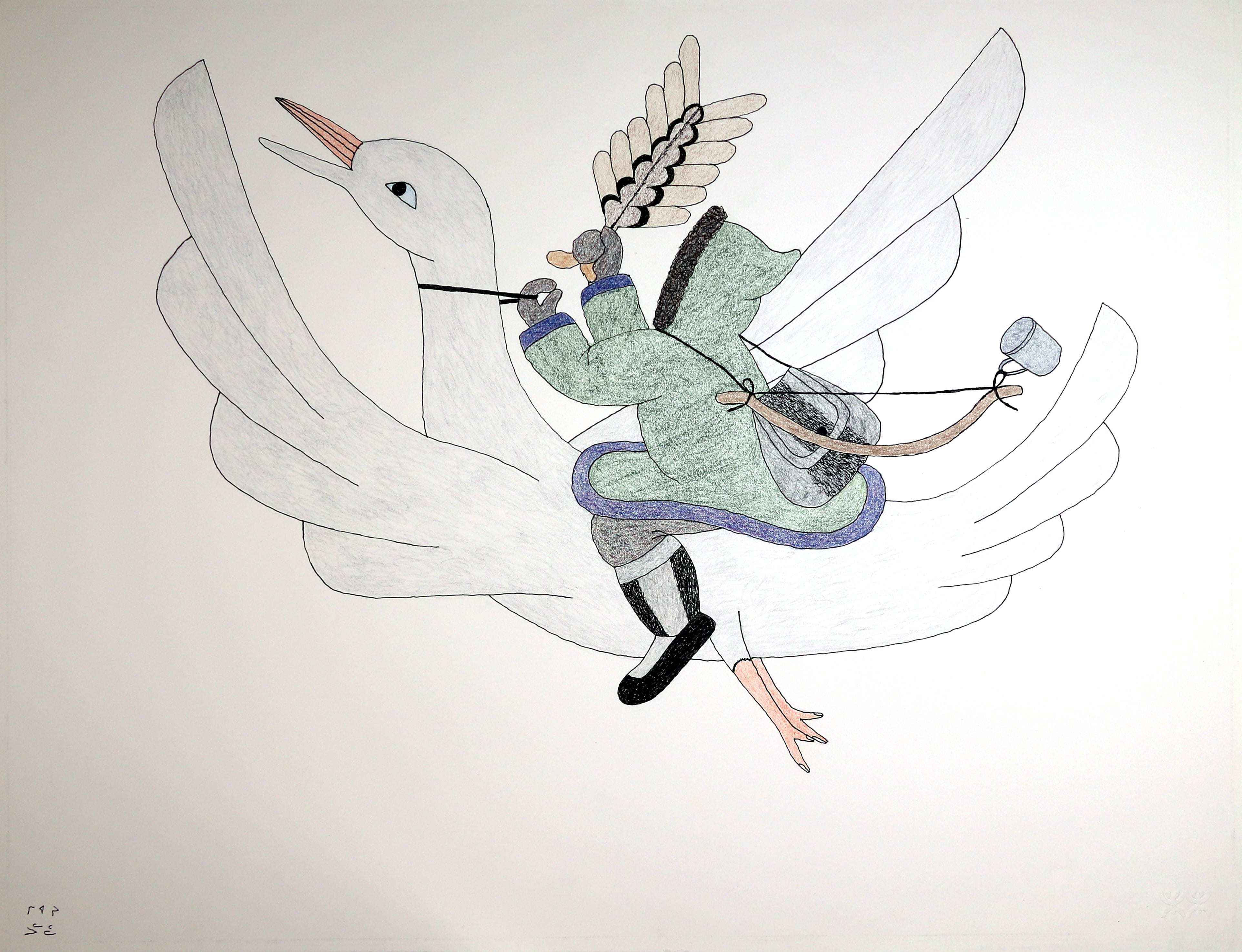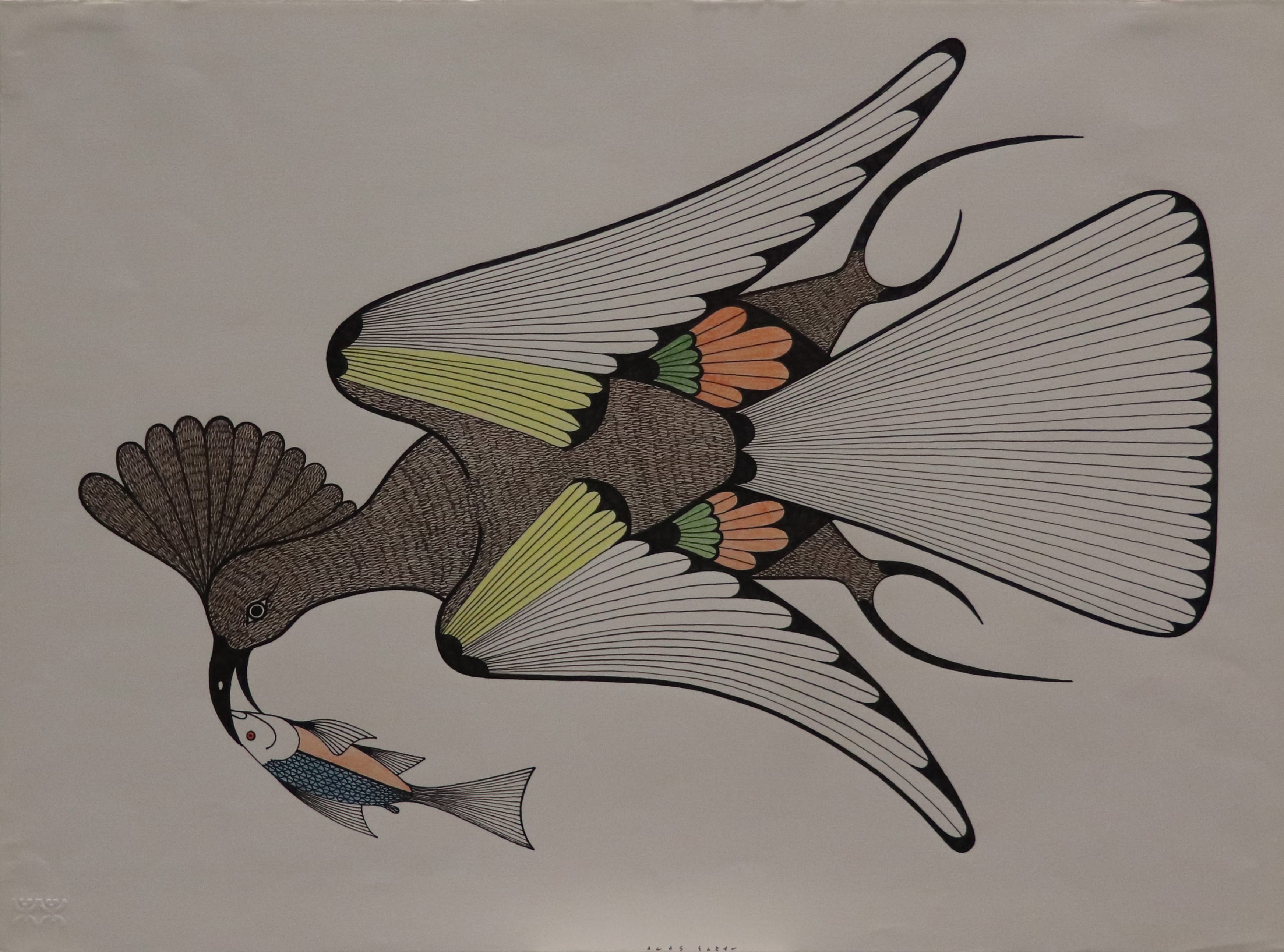
About
This exhibition was curated by graduate students in a Spring 2018 seminar taught by Dr. Jessica Horton in the Department of Art History. The members of the curatorial collective are Meghan Angelos, Elizabeth Humphrey, Sara McNamara, Ramey Mize, Victoria Sunnergren, Rebeccah Swerdlow, Zoe Weldon-Yochim, and Zoë Colón.
This website was created by Zoë Colón, a Ph.D. student in art history at the University of Delaware.
“The World is Following Its People:” Indigenous Art and Arctic Ecology
Melting ice, rising seas, oil drilling, mineral mining, starving polar bears, and seal hunting protests: the Arctic is the site of flashpoints in environmental politics. The same region is home to diverse Indigenous people who adapt their intimate knowledge of plants, animals, land, ocean, and climate to interpret and cope with these disturbing changes. Yupiit in southwestern Alaska and Inuit in northern Canada understand that the environment is sentient and responsive to human behavior. For example, when observing the impacts of climate change, Yup’ik elders warn that “the world is following its people.” Maintaining relationships of respect and reciprocity with other beings and systems is paramount for survival. This foundational ethic is visible throughout the outstanding Frederick and Lucy S. Herman collection of Inuit art, the Mabel and Harley McKeague collection of Yup’ik art, and other gifts housed in the University of Delaware Library, Museums & Press.
These artworks were made during the second half of the twentieth century, when Yupiit and Inuit suffered the disruption of semi-nomadic lifeways based upon subsistence hunting. The collapse of the fur trade, disease epidemics, missionary activities, and United States and Canadian assimilation policies pressured Indigenous communities into permanent settlements and to participate in a capitalist economy. Many Yupiit and Inuit turned to art making to earn income and fortify cultures under siege. Yupiit created dolls and baskets to sell in craft shops frequented by visitors to the newly formed state of Alaska. Inuit translated stories into textiles, sculptures, drawings, and prints for art co-operatives established by the Canadian government. These works convey the resilience of Indigenous knowledge amid rapid cultural and ecological changes brought on by the colonization of the Arctic.
Highlight Object Essays
A Highlight Essay by Meghan Angelos
Highlight Object Essays
A Highlight Essay by Elizabeth Humphrey
Highlight Object Essays
A Highlight Essay by Sara McNamara
Highlight Object Essays
Ecological Ethics and Flux in Germaine Arnaktauyok’s Fish Man and Fish Woman
A Highlight Essay by Ramey Mize
Highlight Object Essays
A Highlight Essay by Victoria Sunnergren
Highlight Object Essays
A Highlight Essay by Zoe Weldon-Yochim
Highlight Object Essays
Inuit Qaujimajatuqangit and Resilience in Qaunaq Mikkigak’s Drawing Hungry Dogs in Camp
A Highlight Essay by Zoë Colón
Exhibition Events
Background Image
by Timkal (own work)
https://commons.wikimedia.org/wiki/File:Qikiqtarjuaq_aka_Broughton_Island.jpg
This file is licensed under the Creative Commons Attribution-Share Alike 3.0 Unported license: https://creativecommons.org/licenses/by-sa/3.0/deed.en






